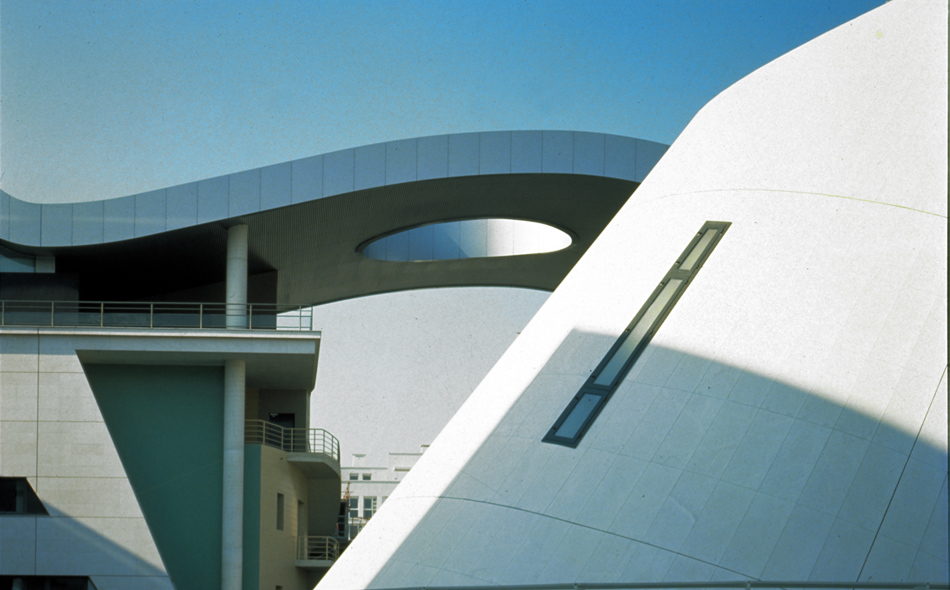|
Amédée-Dominique Dieudonné
Amédée Dominique Dieudonné (6 August 1890 – 1 February 1960) was a French luthier. His instruments sold in Europe and the United States. Biography The son of the luthier Albert Dieudonné, Amédée Dominique Dieudonné was born on 6 August 1890Amédée Dieudonné, 1890 - 1960 oluthiers-mirecourt.com/ref> in Mirecourt in the Vosges department. Amédée Dominique Dieudonné was formed by Gustave Bazin and then at the Darche workshop in Brussels. After the First World War, he established himself as a luthier in Mirecourt in the 1920s. Specializing in the copies of the Cremona masters, he excelled in the rendering of varnishes, going from red to bright red. Amédée Dominique Dieudonné died on 1 February 1960, in Mirecourt. Among his numerous pupils were Charles René Bazin, Jacques then Alfred-Eugène Holder, Pierre Vogelweith, Rambert Würlizer, Victor Aubry, Philippe Coornaert, William Mönig, Jean Striebig, Étienne Vatelot. Sources * René Vannes : ''Essai d’un di ... [...More Info...] [...Related Items...] OR: [Wikipedia] [Google] [Baidu] |
Luthier
A luthier ( ; AmE also ) is a craftsperson who builds or repairs string instruments that have a neck and a sound box. The word "luthier" is originally French and comes from the French word for lute. The term was originally used for makers of lutes, but it came to be used already in French for makers of most bowed and plucked stringed instruments such as members of the violin family (including violas, cellos, and double basses) and guitars. Luthiers, however, do not make harps or pianos; these require different skills and construction methods because their strings are secured to a frame. The craft of luthiers, lutherie (rarely called "luthiery", but this often refers to stringed instruments other than those in the violin family), is commonly divided into the two main categories of makers of stringed instruments that are plucked or strummed and makers of stringed instruments that are bowed. Since bowed instruments require a bow, the second category includes a subtype known ... [...More Info...] [...Related Items...] OR: [Wikipedia] [Google] [Baidu] |
Mirecourt
Mirecourt () is a commune in the Vosges department in Grand Est in northeastern France. Mirecourt is known for lace-making and the manufacture of musical instruments, particularly those of the Violin family. Inhabitants are called Mirecurtiens. Geography Mirecourt is the administrative capital of a canton positioned in the Xantois district at the heart of the Vosges plain, at the confluence of the River Madon with the Arol Valley. Most of the town is laid out on the west side of the Madon on a succession of levels. Visitors are attracted by the richness of the town's architecture and by the natural advantages of the site. Mirecourt is also at the heart of a road crossing, 24 kilometres (15 miles) from Vittel, from Épinal to the east by southeast, from Neufchâteau and from Nancy. For much of the twentieth century Mirecourt was a staging post on the RN66, a major road towards Paris. Following improvements to the autoroute network towards the end of the twentieth cen ... [...More Info...] [...Related Items...] OR: [Wikipedia] [Google] [Baidu] |
Vosges (department)
Vosges () is a department in the Grand Est region in Northeastern France. It covers part of the Vosges mountain range, after which it is named. Vosges consists of three arrondissements, 17 cantons and 507 communes, including Domrémy-la-Pucelle, where Joan of Arc was born. In 2019, it had a population of 364,499 with an area of 5,874 km2 (2,268 sq mi); its prefecture is Épinal. History Hundred Years' War Joan of Arc was born in the village of Domrémy, then in the French part of the Duchy of Bar, or ''Barrois mouvant'', located west of the Meuse. The part of the duchy lying east of the Meuse was part of the Holy Roman Empire. The Duchy of Bar later became part of the province of Lorraine. The village of Domrémy was renamed Domrémy-la-Pucelle in honour of Joan. French Revolution The Vosges department is one of the original 83 departments of France, created on 4 March 1790 during the French Revolution. It was made of territories that had been part of the provinc ... [...More Info...] [...Related Items...] OR: [Wikipedia] [Google] [Baidu] |
Cremona
Cremona (, also ; ; lmo, label= Cremunés, Cremùna; egl, Carmona) is a city and ''comune'' in northern Italy, situated in Lombardy, on the left bank of the Po river in the middle of the ''Pianura Padana'' (Po Valley). It is the capital of the province of Cremona and the seat of the local city and province governments. The city of Cremona is especially noted for its musical history and traditions, including some of the earliest and most renowned luthiers, such as Giuseppe Guarneri, Antonio Stradivari, Francesco Rugeri, Vincenzo Rugeri, and several members of the Amati family. History Ancient Celtic origin Cremona is first mentioned in history as a settlement of the Cenomani, a Gallic (Celtic) tribe that arrived in the Po valley around 400 BC. However, the name Cremona most likely dates back to earlier settlers and puzzled the ancients, who gave many fanciful interpretations. Roman military outpost In 218 BC the Romans established on that spot their first military outpo ... [...More Info...] [...Related Items...] OR: [Wikipedia] [Google] [Baidu] |
Étienne Vatelot
Étienne Vatelot (13 November 1925 – 13 July 2013) was a French luthier. Biography Étienne Vatelot is the son of luthier Marcel Vatelot, who opened his workshop in 1909, and Jehane Lauxerrois. He attended high school at the . From 1942, he learned the craft of luthier in the workshop of his father, located at 11 bis in Paris. He perfected his skills in Mirecourt with luthier Amédée-Dominique Dieudonné, in Paris in the studio of Victor Quenoil, then in New York at Rembert Wurlitzer. In 1949, he obtained the diploma of honor at the International Violin Competition of The Hague (Netherland). In 1959 he was appointed expert witness by the Court of Appeal of Paris and succeeded his father. Étienne Vatelot used to compare his profession to that of a doctor. He was renowned for his diagnostic capabilities He regulated the instruments of numerous international soloists that he accompanied on tour, like French violinist Ginette Neveu. During his career, he advised Yehudi Menuh ... [...More Info...] [...Related Items...] OR: [Wikipedia] [Google] [Baidu] |
Cité De La Musique
The Cité de la Musique ("City of Music"), also known as Philharmonie 2, is a group of institutions dedicated to music and situated in the Parc de la Villette, 19th arrondissement of Paris, France. It was designed with the nearby Conservatoire de Paris (CNSMDP) by the architect Christian de Portzamparc and opened in 1995. Part of François Mitterrand's Grands Projets, the Cité de la Musique reinvented La Villette – the former slaughterhouse district. It consists of an amphitheater, a concert hall that can accommodate an audience of 800–1,000, a music museum containing an important collection of music instruments from different cultural traditions, dating mainly from the fifteenth- to twentieth-century, a music library, exhibition halls and workshops. In 2015 it was renamed Philharmonie 2 as part of the Philharmonie de Paris when a larger symphony hall was built by Jean Nouvel and named Philharmonie 1. Its official address is 221, Avenue Jean Jaurès, 75019 Paris. Philha ... [...More Info...] [...Related Items...] OR: [Wikipedia] [Google] [Baidu] |
Luthiers From Mirecourt
A luthier ( ; AmE also ) is a craftsperson who builds or repairs string instruments that have a neck and a sound box. The word "luthier" is originally French and comes from the French word for lute. The term was originally used for makers of lutes, but it came to be used already in French for makers of most bowed and plucked stringed instruments such as members of the violin family (including violas, cellos, and double basses) and guitars. Luthiers, however, do not make harps or pianos; these require different skills and construction methods because their strings are secured to a frame. The craft of luthiers, lutherie (rarely called "luthiery", but this often refers to stringed instruments other than those in the violin family), is commonly divided into the two main categories of makers of stringed instruments that are plucked or strummed and makers of stringed instruments that are bowed. Since bowed instruments require a bow, the second category includes a subtype known ... [...More Info...] [...Related Items...] OR: [Wikipedia] [Google] [Baidu] |
1890 Births
Year 189 ( CLXXXIX) was a common year starting on Wednesday (link will display the full calendar) of the Julian calendar. At the time, it was known as the Year of the Consulship of Silanus and Silanus (or, less frequently, year 942 '' Ab urbe condita''). The denomination 189 for this year has been used since the early medieval period, when the Anno Domini calendar era became the prevalent method in Europe for naming years. Events By place Roman Empire * Plague (possibly smallpox) kills as many as 2,000 people per day in Rome. Farmers are unable to harvest their crops, and food shortages bring riots in the city. China * Liu Bian succeeds Emperor Ling, as Chinese emperor of the Han Dynasty. * Dong Zhuo has Liu Bian deposed, and installs Emperor Xian as emperor. * Two thousand eunuchs in the palace are slaughtered in a violent purge in Luoyang, the capital of Han. By topic Arts and sciences * Galen publishes his ''"Treatise on the various temperaments"'' ... [...More Info...] [...Related Items...] OR: [Wikipedia] [Google] [Baidu] |



